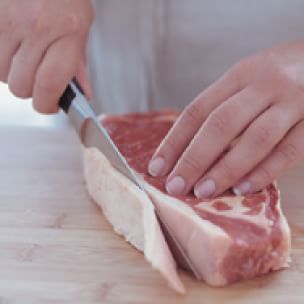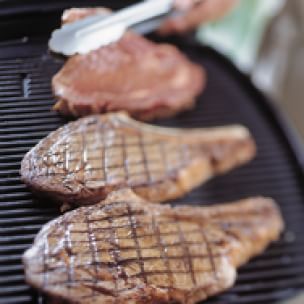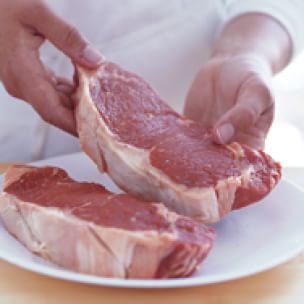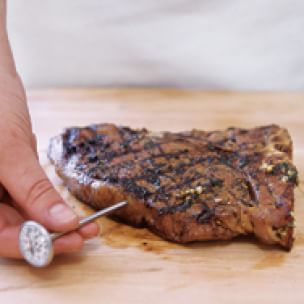
Are expensive cuts of meat the most flavorful?
Actually, some of the most flavorful cuts are also the most economical. With steaks, look for flank, skirt, hanger and flat-iron, commonly called flat steaks or butcher’s cuts. If your recipe calls for one of these cuts, you can use any of the others with equally good results. The key to making these flavorful cuts tender is to slice them perpendicular to the fibers (grain); otherwise they will end up being a little chewy.

Do leaner cuts of beef taste better?
Look for cuts with a high degree of marbling as these will be more tender and juicy than leaner cuts. Most butchers recommend leaving a layer of fat 1/4 to 1/2 inch thick around steaks and roasts. This small amount helps to flavor the meat and keep it moist as it cooks.

What are the best cuts for the way I like to cook?
Stir-frying: tri-tip, top sirloin and flank steaks; filet mignon
Panfrying: rib-eye, New York strip, T-bone and porterhouse steaks
Grilling: rib-eye, skirt, sirloin and strip steaks
Roasting: stuffed flank steak, bone-in rib-eye (standing rib roast), whole tenderloin
Braising: short ribs, brisket, shank and chuck

How should I prepare meat before cooking?
No matter what seasoning, spice rub or marinade you use, keep in mind that every cut of meat should be brought to room temperature before cooking. Cold meat takes longer to cook and the surface of the meat will cook far more quickly than the interior, so the inside will be undercooked even though the outside is done. Let steaks stand at room temperature for 30 minutes and large roasts, up to 2 hours.

How can I tell when the meat is perfectly cooked?
Cooking times will vary depending on the cut of meat, cooking temperature and cooking method, so the best way to determine doneness is to use an instant-read thermometer. For steaks, insert the thermometer horizontally into the center of the meat. For roasts, insert into the thickest part of the roast, keeping in mind the temperature will rise 5 to 10 degrees as the meat rests. Be sure the thermometer does not touch bone. For cuts you braise, the meat is done when a fork can be inserted without any resistance.













